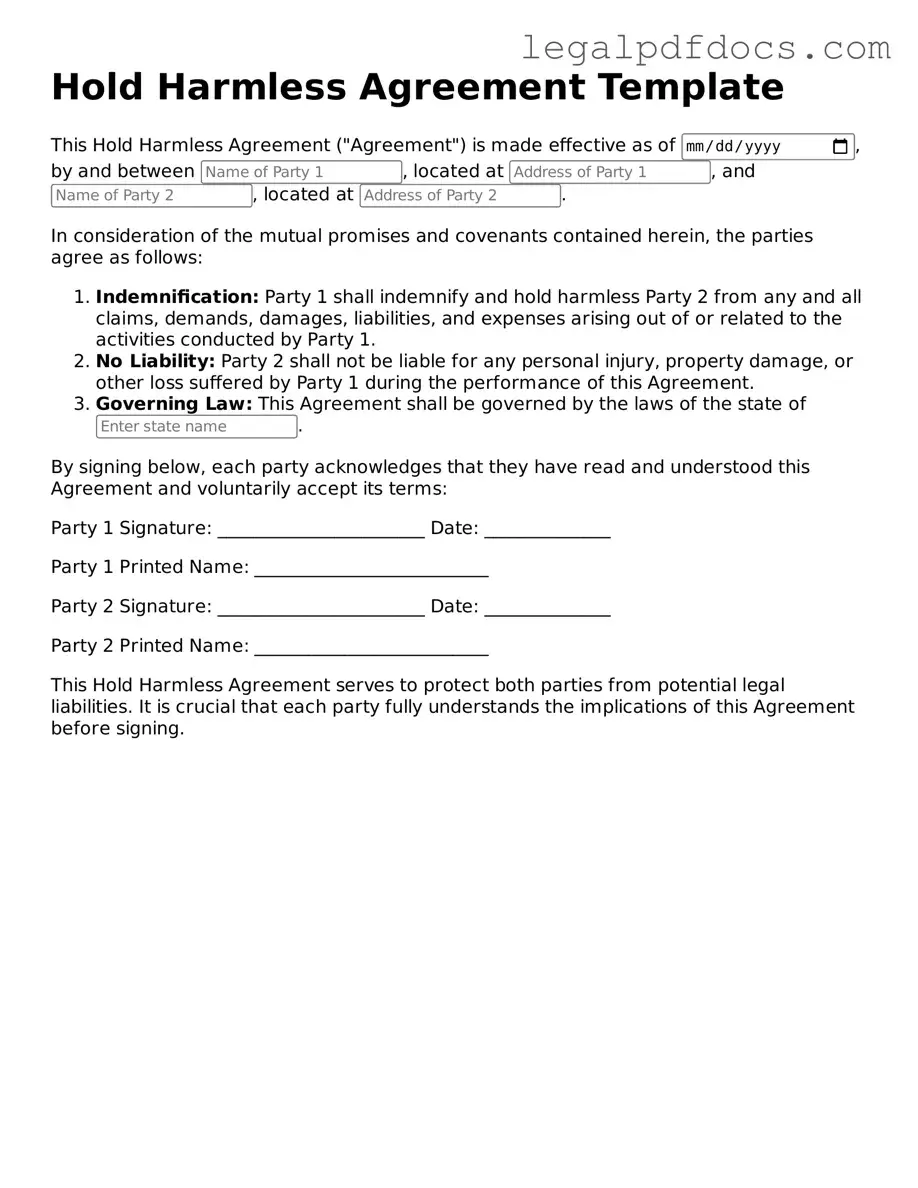A Hold Harmless Agreement is an important document that serves to protect one party from liability or claims arising from the actions of another party. This form is commonly utilized in various contexts, such as construction projects, rental agreements, and events, where one party may assume risks associated with activities or services provided by another. By signing this agreement, individuals or organizations agree not to hold the other party responsible for any damages, injuries, or losses that may occur during the course of the specified activities. Key elements typically included in this agreement are the identification of the parties involved, a clear description of the activities or services covered, and the specific liabilities being waived. Additionally, the agreement may outline any exceptions to the hold harmless provision, ensuring that both parties understand their rights and responsibilities. It is essential for those entering into such agreements to carefully consider the implications, as this document can significantly impact liability and risk management in various situations.
